Non timber Forest Products (NTFPs) are very important from biodiversity point of view, livelihoods, socioeconomic and cultural values. Besides they are used as medicinal and aromatic purposes. They are highly used in colouring, particularly in world famous Mithila art and paintings. Mithila paintings are also well known as Madhubani paintings. Natural colors are used in Madhubani paintings. These natural colours are those extracted and derived from non timber forest products (NTFPs), plants, stones, vegetables and other things found naturally in nature. Natural colors are bright, they are more like water colors when on paper and that watery consistency and earthly origin is something that adds authenticity to a Madhubani paintings.This painting is the expression of unusual, symbolic, tantric folk tradition.
Why Kayasth. Brahmins and some other castes prefer to use natural colours ? It is because of extremely cheap, nature’s or environment friendly, fun and adventurous, hand made, not thick filling in colours easier and faster, looks original and village like. Indigenous folk art in modern time received acclaim as Mithila art. It is an ethnic art. Probably every households of Mithila is very much involved in preserving their indigenous art through their cultural practices like ‘kohber’ (paintings in the sanctum of newlyweds), Aripan (portray the agrarian materialism of Maithil folks etc.
The world population of Kayastha is 9509600. The kayastha population is about 45000 which is spread in 13 zones of Nepal. The majority is in Janakpur, Narayani, Kosi, Sagarmatha zones followed by Bheri, Bagmati, Mechi and others.In Nepal Maithili is the second national language and majority of people living in Eastern and Central Development region (now Pradesh no 2 and 1) speak maithili.Besides kayastha, other castes, ethnic groups also speak Maithili and represents Mithila cultures at several occasions in the form of rites, rituals, ceremonies like marriage, Mundan, Upanayan /Chudakaran, Shradh karm etc. Aripan is very important and of great significance in Mithilanchal which is based on Shakti, mantras, and natural resources are used e.g Bamboos, Banana tree, Sani plant, Tulsi, Mehadi, rice, turmeric etc. Mithilanchal women in particular are very skillful and experts in the above works,. Use of plant and its products in Mithila paintings.
Colors and Dyes
Mithila has been world famous from the ancient time for her culture, philosophy and wisdom. She has earned great fame far and wide for her folk arts on wood works, wicker works, bamboo and bent works and such other artifacts. The fact is evidenced by Pauti (wicker basket with a lead), Mauni (open wicker basket), straw mat, Siki, Sujani, Sitalpati, Godana and different formsin different or multi colours. Mithila art and paintings were recognized in the world after 1966 A.D.
Colors play an important role in Mithila arts of picture paintings, decorative diagram and figure drawings. Physics has determined only three fundamental colors viz red, blue and green. However Mithila cultures recognize red, yellow, black, blue and white colors as five fundamental qualities of life. These colors are obtained mostly from plants and animals found in the surroundings of residence (Bari Jhari, bunds of khet) The followings are some of the examples of colors and Dyes used by Maithil Kayasth, Brahmins and other castes including Tharus. The products of Mithila art and paintings have taken good market in the both country Nepal and India as well as abroad. Thus the plants and its products support in the livelihoods as well.The use of natural resources in Mithila with special reference to colours, paintings, cultural significance is given in the table below
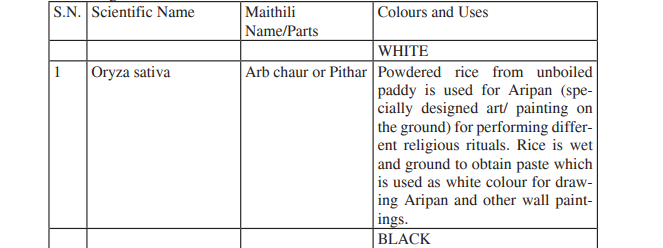
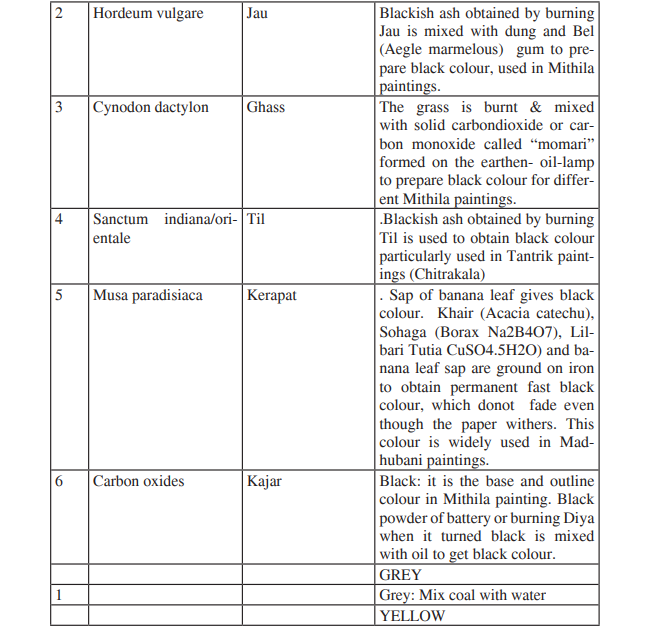
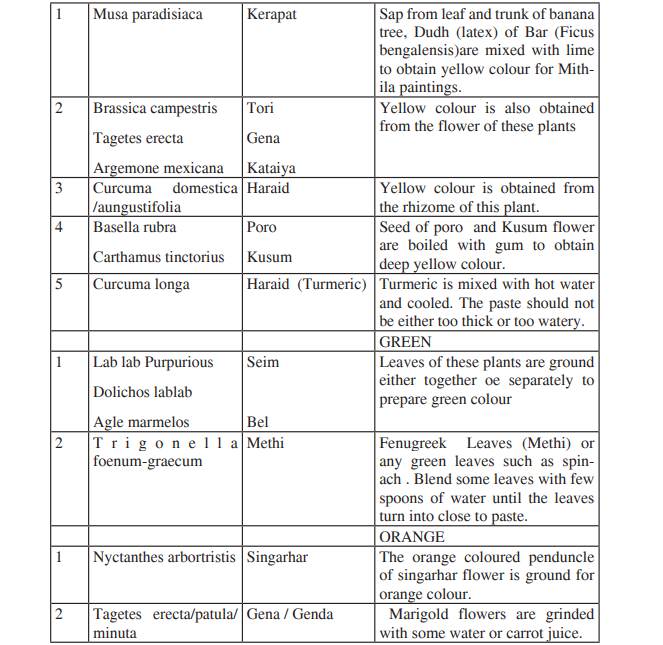
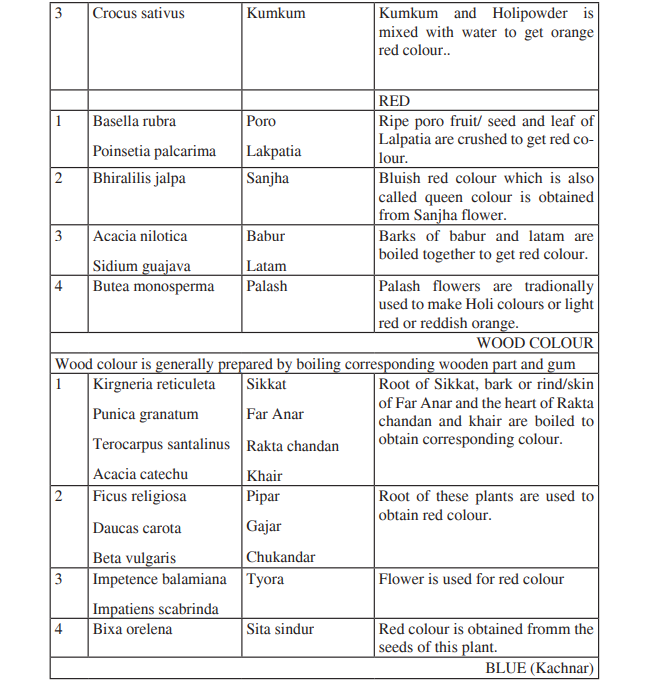
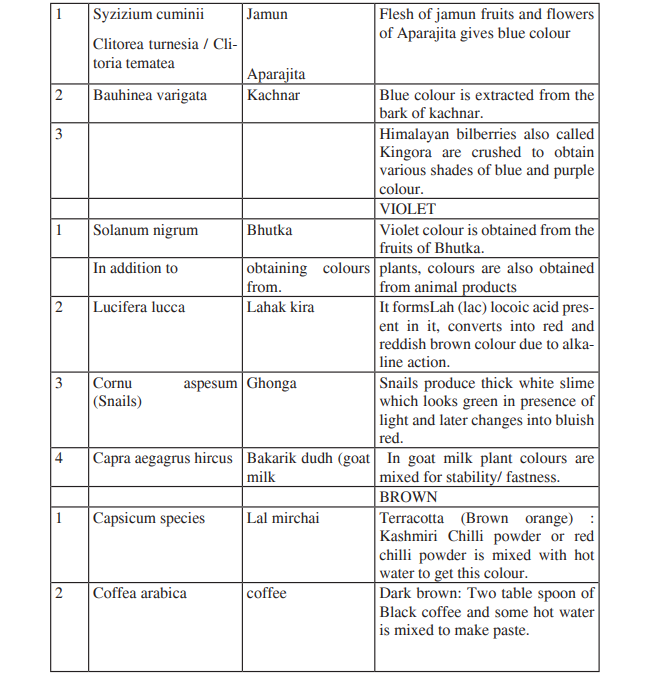
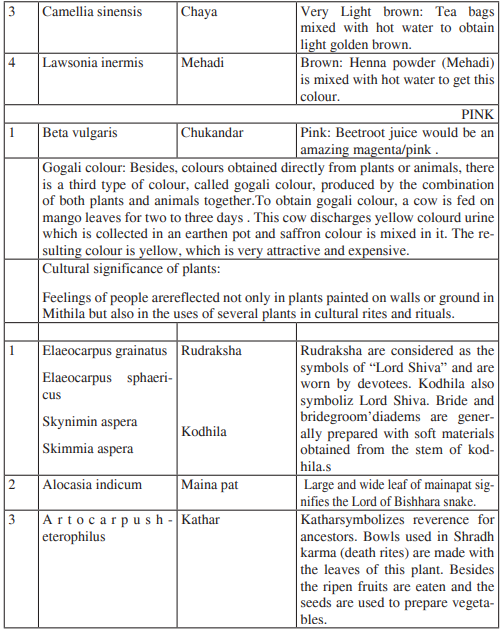
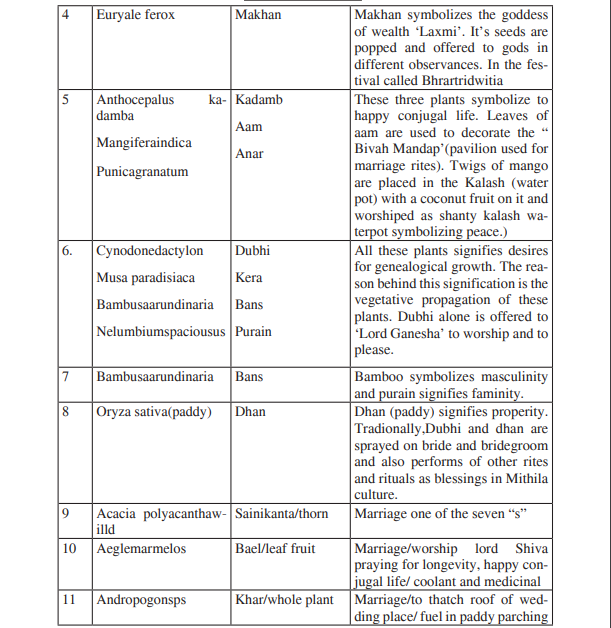
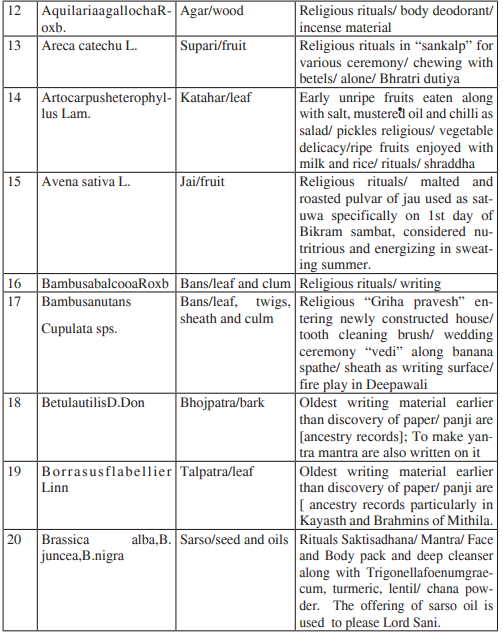
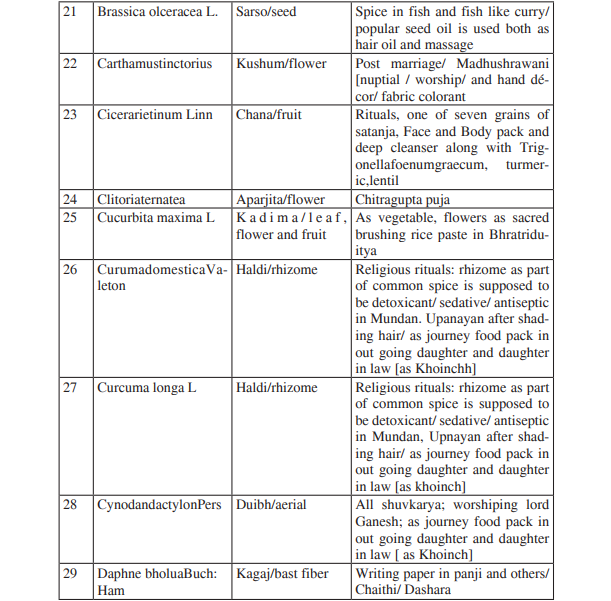

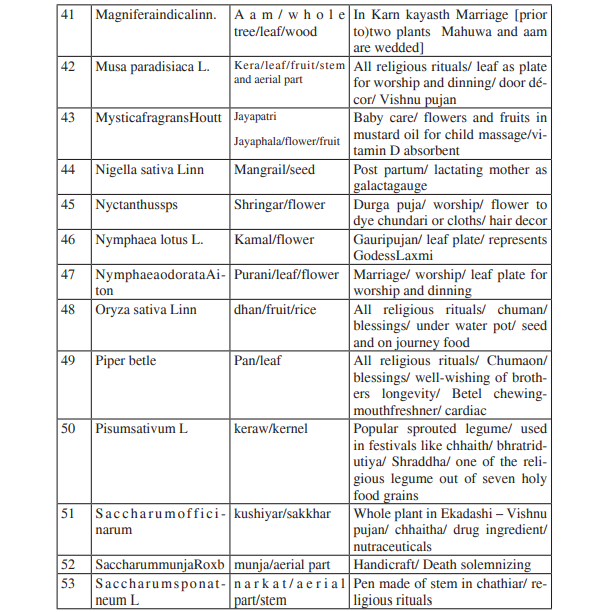
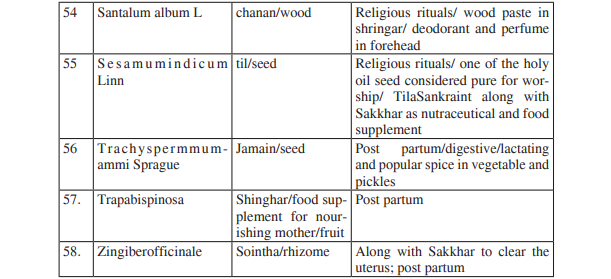
These are not the exhaustive list of plants that are used in food, culture and religious ceremonies in Mithila rather great number of plants is being used.
Future prospects of Mithila art are undoubtedly bright. Hope Madhubani or Mithila paintings will keep adapting with new innovations in future with same auspicious colorful connotation in their themes. There will be more creativeness and innovations regarding natural colours used for different purposes. The above article is based on the collection from different books, internet, many published and unpublished literatures, primary data from field, self observation and key informant interviews.
Bibliography 1. Jha, L. (1962) Mithila ki Sanskritik Lok Chitrakala. 2. Thakur, U (1982). Madhubani Paintings. Publication Abhinav prakashan, Delhi. 3. Thakur U (1987). Mithilak chitrakala O Shilpkala, Maithili Academy Patna, India 4 . Thakur, A.K. 2009 15th November, New Delhi, India. 5. Dutta, I.C. (2007) Non-timber forest products of Nepal pp 500, Hill Side Press(P) Ltd. Kathmandu, Nepal
